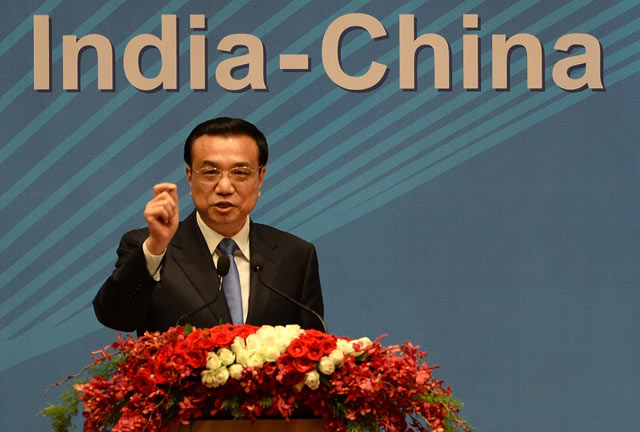With the stakes high in a world of diminishing resources, will Southeast Asia become the battlefield for a stand-off between India and China?
By Tridivesh Singh Maini
Home to more than 2.6 billion people, China, India and Asean together account for more than 40% of the world’s population. Combined, their national wealth could exceed the collective riches of the US and EU over the next 18 years. Yet strategic interests, political posturing and a battle for resources could leave Asean in the middle of a jostle between the two economic powerhouses.

Photo by Image Forum
Growth rates in India and China have swelled in tandem with increased demand for energy. By 2020, it is estimated that their combined economies will account for roughly one-third of the world’s gross domestic product; such growth requires vast amounts of energy.
Both nations are looking to Southeast Asia to help satiate this demand and to wean themselves off their dependency on oil imports from the Middle East, which exposes them to supply disruptions and price fluctuations.
The South China Sea is being touted as a new energy frontier and violent confrontations in recent years over territorial markings illustrate the competition for what are believed to be sizeable deposits of oil and gas. While the area remains largely unexplored, the South China Sea is believed to hold vast reserves of natural resources. Extrapolating estimates using the mineral wealth of neighbouring areas, the US Energy Information Administration approximates that the area holds 11 billion barrels of oil reserves, 190 trillion cubic feet of natural gas reserves and a potential wealth of hydrocarbons. The South China Sea is also one of the region’s main shipping lanes.
Trade between China and Asean reached a record high of $400 billion last year; yet Southeast Asia’s great benefactor has not been shy in leveraging its position in its bullish pursuit of energy. Aggressively asserting its domain as a bitter territorial dispute – potentially to become the biggest flashpoint in the region – plays out with several Southeast Asian nations, China has at times resorted to armed force and coercion against less powerful Southeast Asian nations, such as Vietnam and the Philippines.
While the US has urged calm, some Southeast Asian nations are seeking support from Asia’s other heavyweight, India, which has begun to voice its strategic interest in the region as a logical extension of its 20-year-old Look East policy.
“The Ministry of External Affairs recognises the need to engage with Southeast Asia as a counter to China,” said Dr S. Narayan, head of research at the Institute of South Asian Studies in Singapore. “Southeast Asia is also keen to bring in India as a supporter and a counterbalance.”
For India, improved relations with Asean gives it access to one of the fastest-growing economic regions in the world and a source of much-needed raw material.
“There is political consensus [in India] to enhance the country’s relationship with Asean countries at a regional, sub-regional and bilateral levels,” said Paramjit Singh Sahai, a former Indian diplomat.
Last year, India-Asean trade reached $80 billion and is expected to top $100 billion in 2015. Trade in natural resources is tipped to be high on India’s agenda, as the country that imports 80% of its fuel becomes far more resource-oriented.
While India has no territorial claim in the South China Sea, it has partnered with Vietnam to explore for oil and gas. In December, the two countries were locked in a dispute with China after Vietnam accused a Chinese fishing boat of cutting a seismic cable attached to one of its exploration vessels near the Gulf of Tonkin, an area contested by China.
Shortly after the incident, the Indian navy sparred diplomatically with China by announcing that it was prepared to deploy vessels to the South China Sea to protect its oil interests there. In May, a four-ship flotilla from India carried out naval exercises with Singapore, Malaysia, Vietnam and the Philippines, the last three of which are embroiled in territorial disputes with China.
India’s moves are unsettling China, which prefers to deal with territorial disputes bilaterally. The competitive relationship between China and India, however, is not restricted to the waters of the South China Sea. Resource-rich Myanmar holds strategic interest for both countries and could be another potential stage for a clash between the two nations.
India has signed a $40 billion deal with Myanmar for the transfer of natural gas and has held many talks on the construction of the Myanmar-Bangladesh-India pipeline. India extended a $500m line of credit to Myanmar, where it has acquired a 77.5% interest in an onshore oil block.
However, if India is to remain relevant in Myanmar it must do more to counter China’s already heavy presence in the country. A 1,100km-long, $2.5 billion pipeline financed by China, connecting Myanmar’s central west coast to China’s Yunnan Province was due to begin pumping gas at the end of last month. It is one of many energy related projects China has in the works.
While a direct conflict between India and China is unlikely, their economic and strategic rivalry in Southeast Asia will probably endure for some time. Both countries would do well to remember that while natural resources may be required for growth, peace is a precursor for development. As the centre of the global economy shifts eastwards, the 21st century cannot truly be the Asian century if some parts of Asia remain mired in instability.
Also view:
“The butterfly effect” – As the nature of China’s economic expansion changes, what will imbalances in its economy mean for Southeast Asia?
“A Maritime Maelstrom” – Asean’s failure to issue a joint statement in July made waves across Southeast Asia. Could the South China Sea dispute sink the bloc in November?
